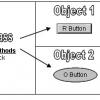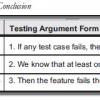 |
Planning the Endgame What can a test manager do when a project manager says, "Test faster!" or tries to cut the amount of testing to meet a project release date? Fiona Charles says that you can argue for the time and resources you need by incorporating the endgame into your estimations. In this week's column, Fiona details how to structure a winning argument by paying close attention to all the activities that occur during testing.
|
|
|
|
Changing the QA Mindset for Rich Internet Applications Today's Rich Internet Applications (RIAs) bear about as much resemblance to the early Web sites of the 1990s as today's cars bear to a Model T. While the principle may be the same, the underlying technology is radically different. While safety testing for automobiles has improved significantly in the past hundred years, though, Web-application testing remains stuck in a 1990s mindset. In this week's column, Bryan Sullivan explains that QA must change its testing approach in order to maintain the security of the code.
|
|
|
|
What Not to Test When It's Not Your Code This article is a continuation of a previous write-up on "What to Test When It's Not Your Code." As mentioned previously, test strategies should be radically different and flexible when it comes to testing code delivered by any vendor external to an organization. Similarly, the rationale behind deciding what does not need to be tested or what is given the lowest testing priority for external software products should be radically different from the rationale practiced for in-house software products. The reason for the differences has a lot to do with the risk posed by the third-party application on the daily operations of the organization. Also, the credibility of the vendors can play a major role when deciding what takes a lower priority in testing.
|
|
|
|
A Game Plan for Rapid Test Planning Rapid test planning is a process of cultivating test ideas within minutes, rather than days. It's opposed to rigorous test planning, which may strive to document every test possibility. The mission is to get testing on the road now, finding critical things to test, and getting important information to stakeholders quickly. In this article, Jon Bach explains how easy it can be to tackle a rapid test plan once you've got a strategy in mind.
|
|
|
|
Improving the Accuracy of Tests by Weighing the Results Test automation is often hard to do well, especially when testing a complex system where the results may be dynamic and hard to predict precisely. For instance, how would you test a price finder for highly volatile products such as airline tickets, where the data comes from live, third-party systems? While manual testers can interpret such results to decide whether a system is working correctly, the interpretation may be much harder to codify in an automated test. In this week's column, Julian Harty describes an approach that may help you to improve the accuracy of your automated testing even in these volatile environments.
|
|
 |
Object of My Desire Object orientation, the least talked about component of test automation, might be the most important factor. In this column, Dion Johnson explains how effective test automation is heavily reliant on objects.
|
|
 |
Understanding the Logic of System Testing This article discusses the logic of system testing and how to construct the valid proofs that testers can use to assess the quality of a software product.
|
|
|
|
Exploratory Load Testing Load testing is a necessary but daunting task on many testers' to-do lists. As difficult as the task may be, it helps testers find problems when a software product is running at full capacity. Danny R. Faught explains how he takes an exploratory approach to load testing, which gives quick results without making a big tool investment.
|
|
|
|
How Much Building Is Too Much? Staged integration versus continuous integration—which does your team prefer? Can't decide if one is better than the other? In this column, Johanna Rothman explains that you can create the perfect blend of the two. Developers and testers benefit from frequent builds, but be careful with how much you build. Build too much or too little and a project could topple.
|
|
|
|
Test-Driven Project Management While the test organization is normally considered the "Subject Matter Expert" within a software company, it is rarely charged with leading a software development effort. In fact, with the increased popularity of Extreme Programming and specifically the concept of Test-Driven Development (TDD), many testers are working to expand their skill sets so that they can adapt to a changing test culture where they will be viewed as part of the development organization. In this article, Scott Lazenby details some of the ways testers infuse the development mentality into their project management.
|
|

